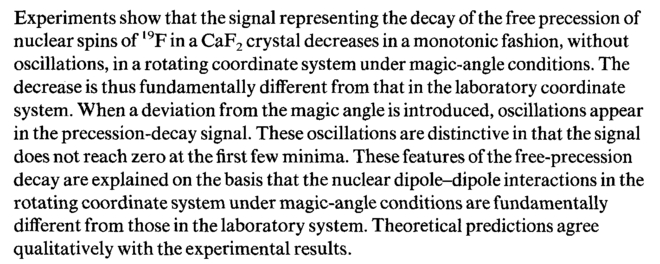Decay of the free precession of nuclear spins in a solid in a rotating coordinate system under magic-angle conditions; three-spin interactions
Mefed A. E., Yaroslavtsev A. V., Zobov V. E., Ponomarenko A. V., Popov M. A.
Experiments show that the signal representing the decay of the free precession of nuclear spins of l9F in a CaF2 crystal decreases in a monotonic fashion, without oscillations, in a rotating coordinate system under magic-angle conditions. The decrease is thus fundamentally different from that in the laboratory coordinate system. When a deviation from the magic angle is introduced, oscillations appear in the precession-decay signal. These oscillations are distinctive in that the signal does not reach zero at the first few minima. These features of the free-precession decay are explained on the basis that the nuclear dipole-dipole interactions in the rotating coordinate system under magic-angle conditions are fundamentally different from those in the laboratory system. Theoretical predictions agree qualitatively with the experimental results.


 Home
Home